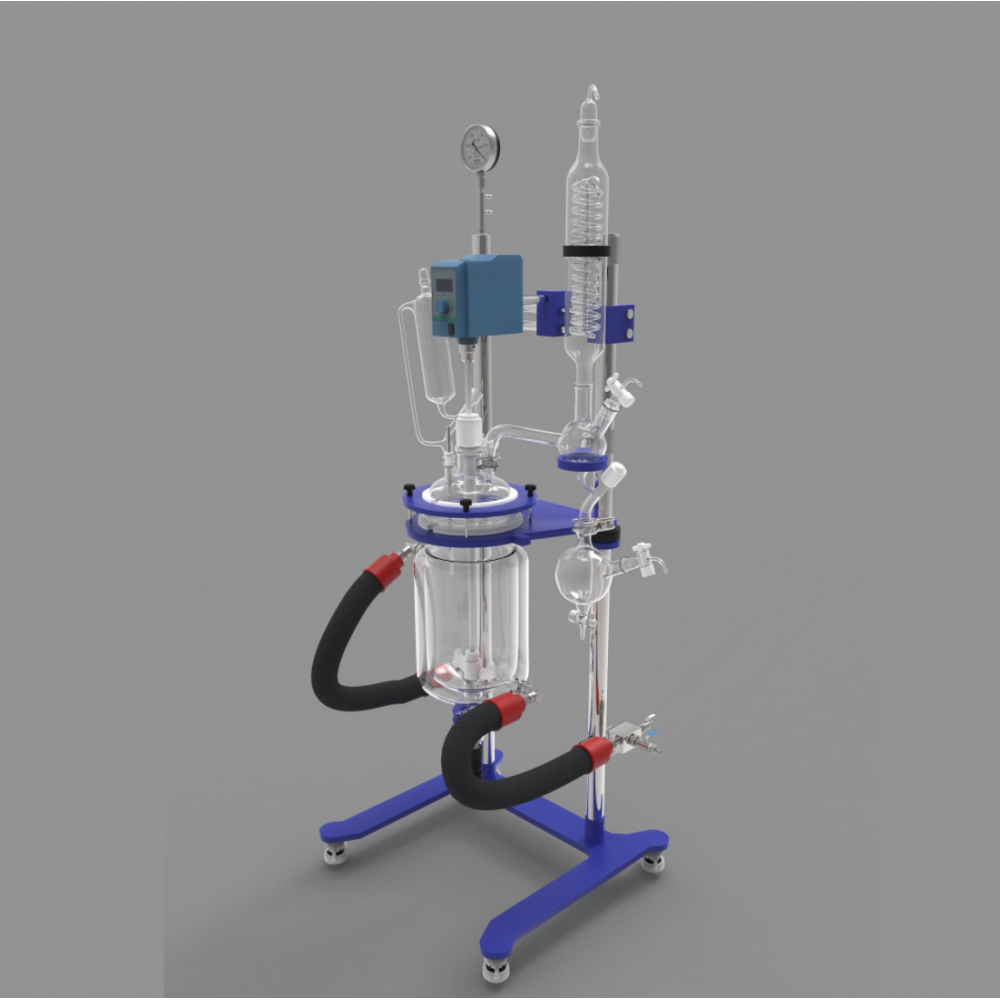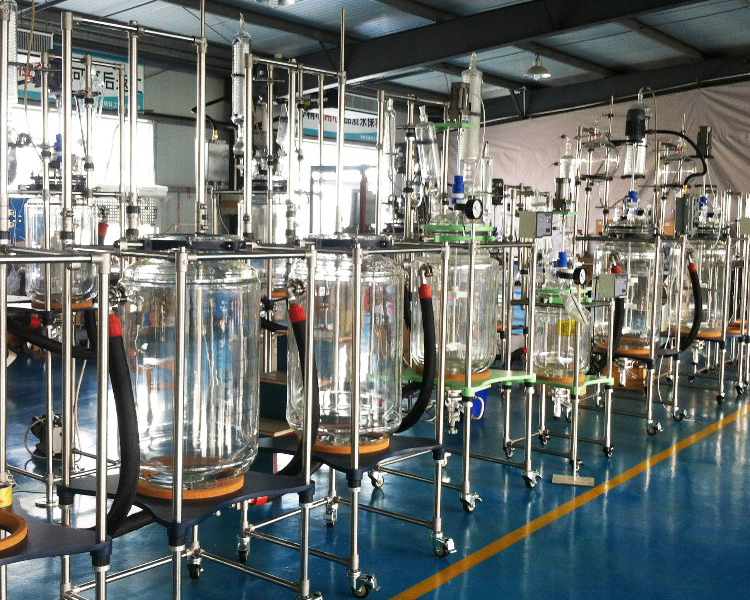Pilot plant glass reactor are used in college laboratories for heating/cooling of reaction materials, experimental synthesis, catalysis, or chemical reactions under other inert gas conditions; let’s take zirconium and boron sol-gel as examples to introduce the pilot test The use of glass reactors in experiments.
Zirconium and boron sol-gel are widely used in the field of material chemistry. At present, the common preparation method in the laboratory is to prepare the precursor zirconium sol and boron sol in the pilot plant glass reactor, and then add catalyst to catalyze the formation of zirconium boron Sol-gel. The whole preparation process not only needs to heat the sol in the reactor, but also needs to cool the gel. When configuring the precursor zirconium sol and boron sol, the constant temperature oil bath heats the heat transfer oil injected into the jacket to achieve the required high temperature environment. After the catalyst is added, the reaction releases a large amount of heat. At this time, it is necessary to use heat transfer oil to cool the high-temperature precursor sol to prepare zirconium and boron sol-gel.
pilot plant glass reactor
Pilot Plant Glass Reactor Use Process:
When air is used as the tempering medium:
The heat transfer medium in the jacket of the pilot plant glass reactor is air. Although the heat capacity of the air is small and the heat transfer capacity is relatively poor, the large flow rate can make up for the weakness of the insufficient heat transfer capacity to a certain extent. There is the problem of low conversion efficiency of the heat-conducting medium between high temperature and low temperature states.
Implementation method: The diameter of the lower air inlet of the pilot plant glass reactor should not be less than 6 mm to ensure sufficient mass flow. During the sol preparation process, when the temperature needs to be raised, turn on the electric heating fan to adjust the required temperature and suitable wind speed. The purpose of heating and heat preservation is achieved through the hot air in the interlayer. During the gel preparation process, when a large amount of heat is released after adding the catalyst and needs to be cooled down, the electric heating device is turned off, the fan is turned on separately, and normal temperature (20°C) air is fed in at a certain speed to cool down the reactor. The air temperature control device has a compact and simple structure. Although the heat exchange capacity of air heating and cooling is slightly poor, the temperature in the interlayer of the pilot plant glass reactor can be switched quickly between high and low temperatures, and the efficiency is improved.
pilot plant glass reactor
When water is used as the tempering medium:
In the process of sol preparation, the temperature requirement is 80-90°C, which does not reach the boiling point of water, so the oil bath heating device can be changed into a water bath heating device, and the specific heat capacity of water is large, and the heat exchange capacity is strong, which can heat and cool faster effect,
Implementation method: When the sol in the reactor body needs to be heated and kept warm, the hot water valve and the circulating water valve are opened, the water inlet valve 2 and the drain valve are closed, and the heating temperature required for the reaction of the sol is set, and the hot water enters through the hot water pipeline The reactor jacket flows through the entire jacket and flows back to the heating water tank through the outlet pipe at the outlet of the reactor jacket to provide a stable ambient temperature. When the temperature needs to be lowered for the next reaction, the electric heater is turned off, and the hot water in the reactor jacket is returned to the heating water tank. Close the hot water valve and the circulating water valve, open the water inlet valve 2 and the drain valve, and directly let the normal temperature water enter the reactor jacket through the cooling ring to take away the heat generated by the reaction, so that the sol in the reactor body can be cooled rapidly and taken away. The hot cooling water is discharged directly.
The preparation process of zirconium and boron sol includes the preparation of zirconium sol and boron sol, the catalytic process of adding catalyst, the process of transformation from sol to gel, and the transformation process from wet gel to dry gel. Among them, the preparation of sol and the process of adding catalyst are all in the double-layered jacketed in a glass reactor. The different temperatures that each process needs to maintain are controlled by the heat transfer oil in the double-layer glass jacket reactor and its matching constant temperature oil bath system.
Pilot plant glass reactor can choose two styles of jacket and single layer, innovative mechanical sealing method, no peeling, no oil, no lubrication, to ensure excellent sealing. The four-leaf anchor type combined with the four-blade oblique blade shearing double-layer agitator ensures the best mixing effect, can mix high viscosity, and has zero dead angle discharge valve. welcome to consult



